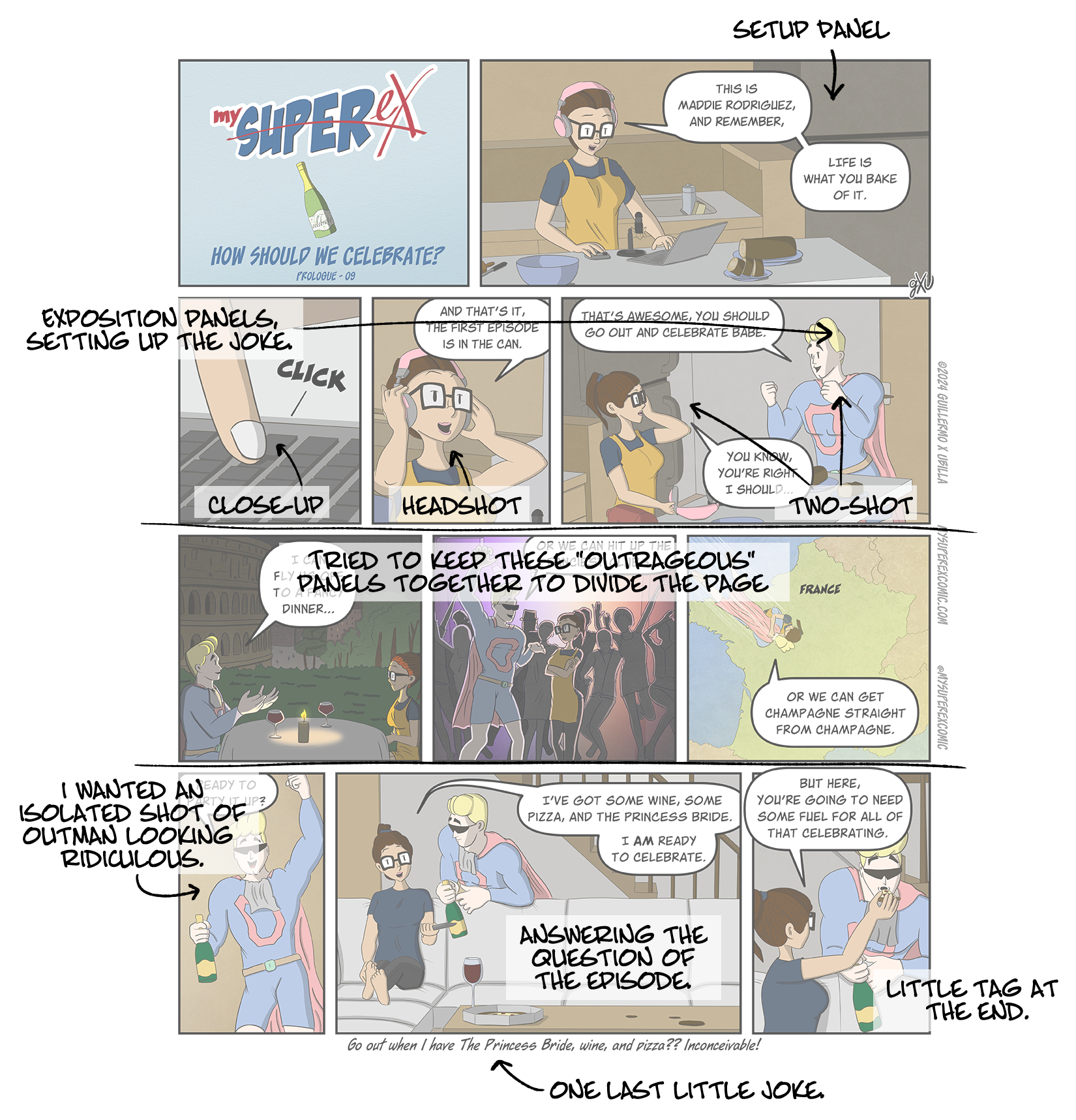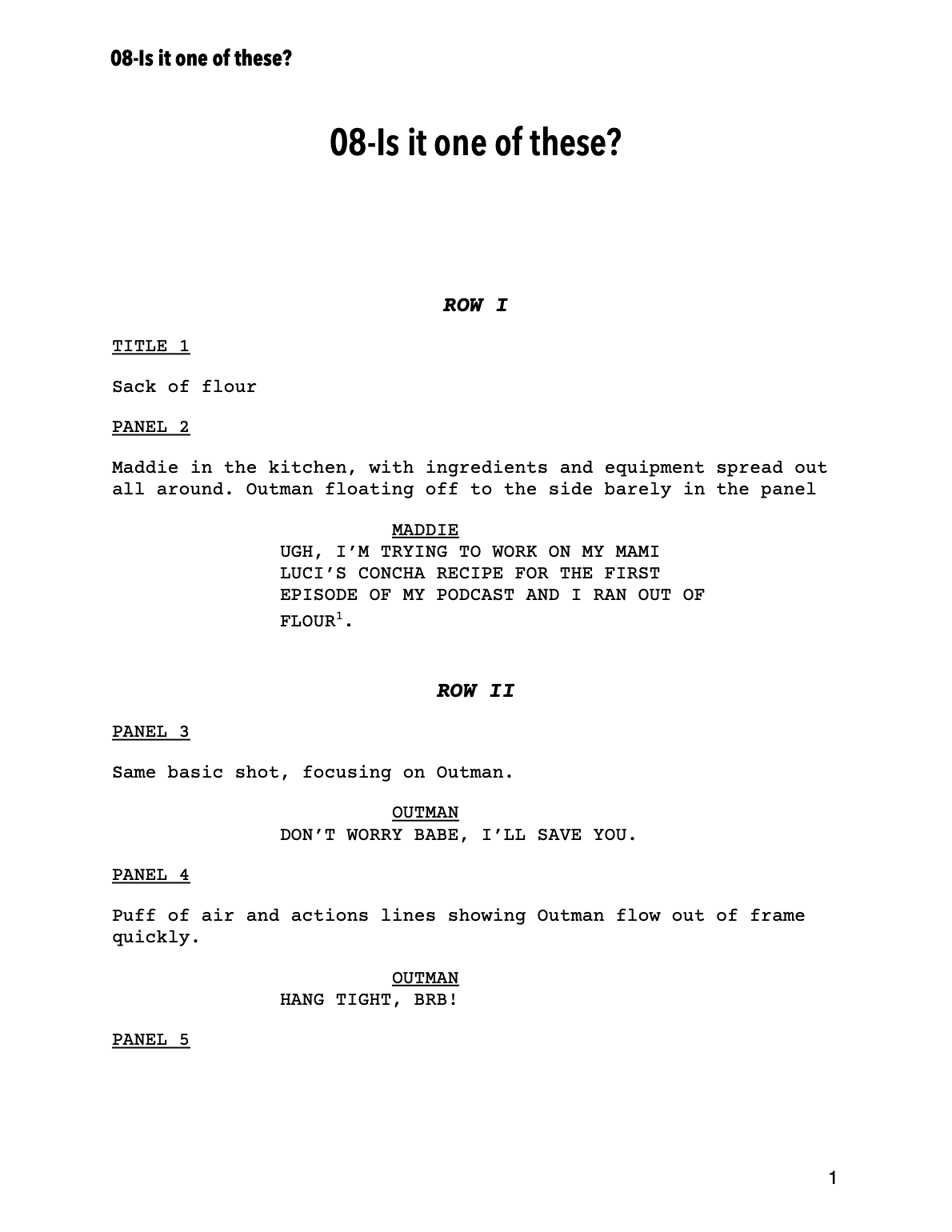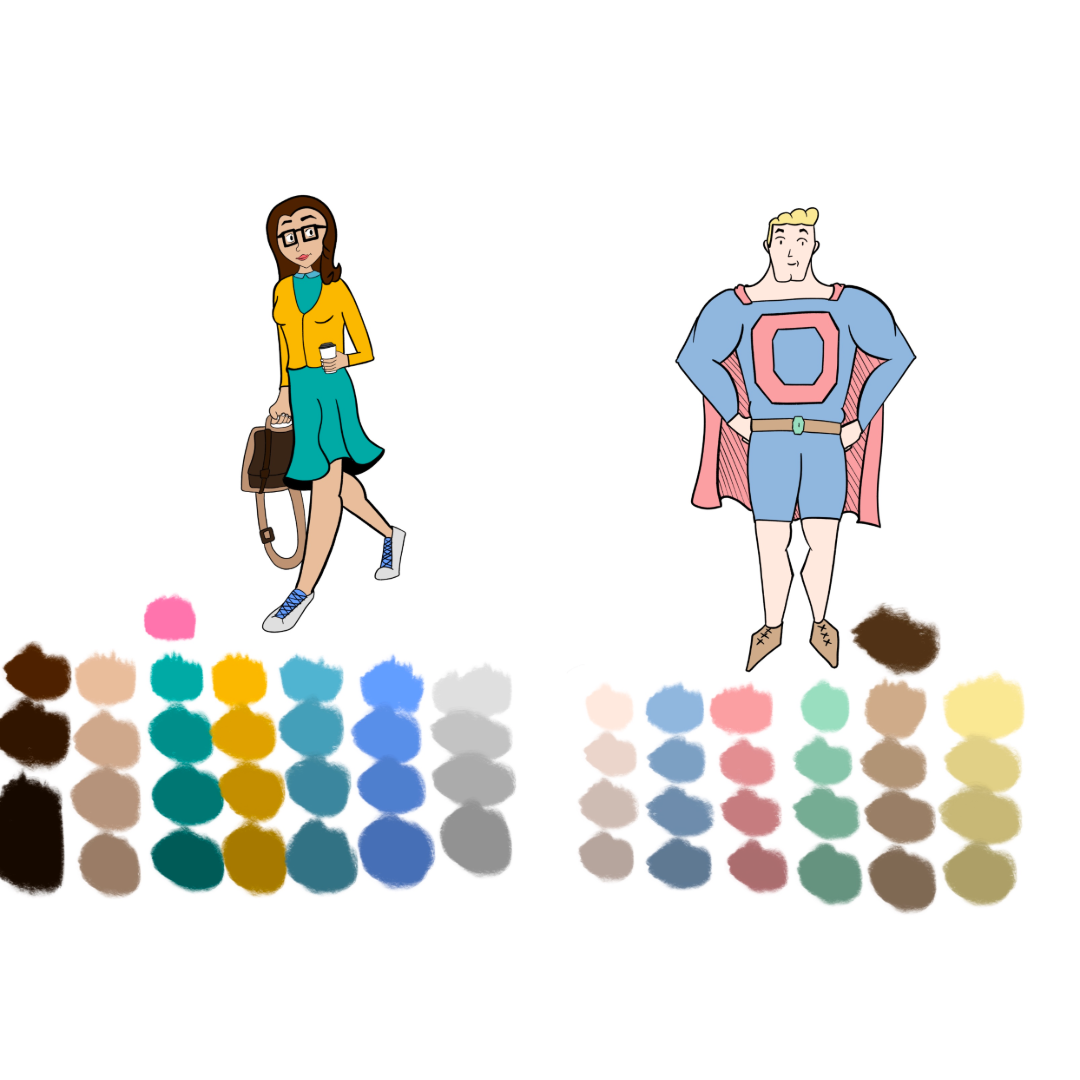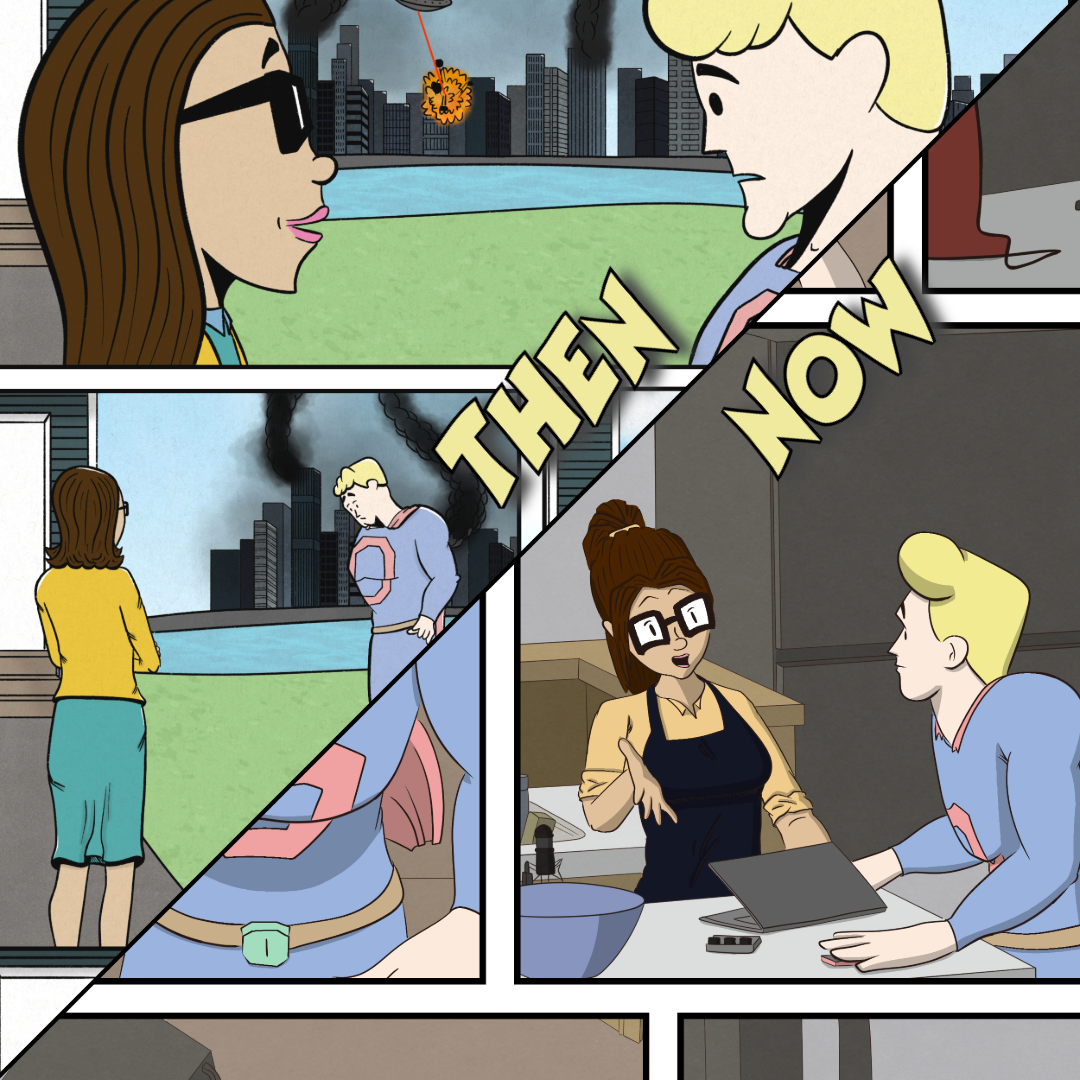Laying out a comic page that works in three different formats has its challenges. Today, I thought I’d walk you through my process for this week’s page. I keep a consistent title panel for the Prologue comics, which leaves me […]
Read More
Category: Take a Look
Script to Panel Episode 08
Working on my first comic solo has been a whirlwind of figuring out what’s a good use of time and what might be a waste. One big question I had was whether to write a full script for each episode. […]
Read More
Choosing character colors: Outman
Creating the color palette for Outman was one of the first things I tackled when designing the My Super Ex characters. Since I wanted him to always be in his superhero outfit, unlike the other characters who would change clothes […]
Read More
What it takes to share in three formats
I’m working to making “My Super Ex” as readable as possible regardless of how people want to read the comic. I’m making each comic in a unique format: 📖 Page Layout: Perfect for print and large screens, where you can […]
Read More
How Things Have Changed
I’ve been working on this webcomic for over two years, and after going through thousands of drawings and sketches, I came across the original character drawings. It’s amazing to see how far I’ve come since then, and I’ve found it […]
Read More




